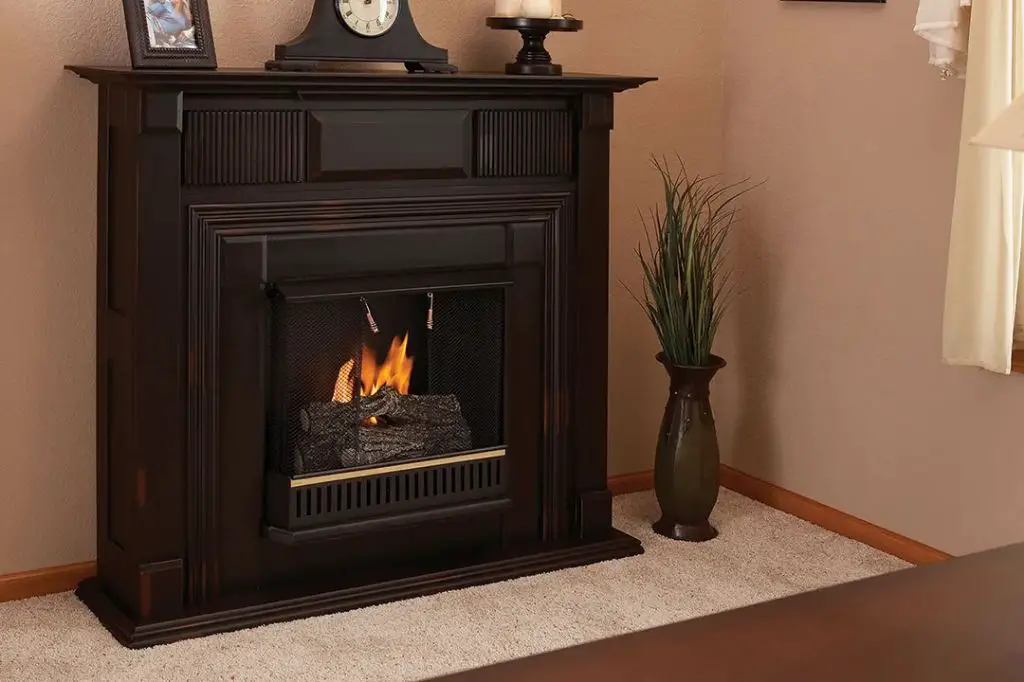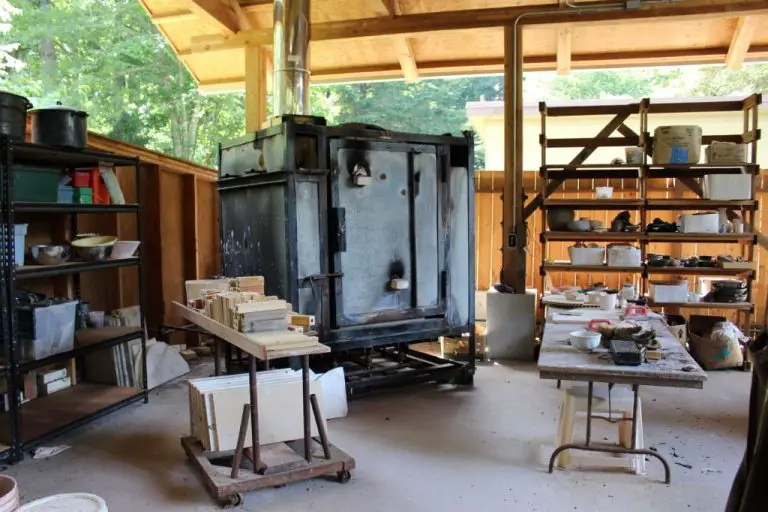What Type Of Fireplace Can Be Installed In A Bedroom?
Having a fireplace in the bedroom can provide a cozy, inviting atmosphere and serve as an attractive focal point in the room design. With proper safety precautions and proper installation, a bedroom fireplace can be an excellent addition. However, there are important factors to consider regarding ventilation, clearances, and fireplace types before installing a fireplace in a bedroom.
Understanding the benefits, considerations, and options for bedroom fireplaces is key for homeowners deciding whether to add one. This article provides an overview of the topic to inform readers on best practices and recommendations when evaluating bedroom fireplaces.
Safety Considerations
When installing a fireplace in a bedroom, there are important safety factors to consider. The main risks to be aware of are fire hazards and carbon monoxide poisoning.
All fireplaces pose some risk of fires, but this is especially dangerous in a sleeping area. Embers or sparks from a wood-burning fireplace can escape and ignite bedding or other flammable materials. Gas fireplaces also carry a fire risk if they malfunction or are improperly installed. Good fireplace screens and proper clearances are crucial in bedrooms.
Carbon monoxide is another serious concern with any combustion fireplace. Gas fireplaces can leak carbon monoxide if they are faulty or ventilation is inadequate. Even vented wood-burning fireplaces release some carbon monoxide. CO detectors are an absolute must for all bedrooms with a fireplace.
Proper installation by a certified professional is key to minimizing risks. Routine inspections and maintenance on the fireplace can also help avoid problems. With the right fireplace type and safety precautions, bedrooms can safely accommodate a fireplace.
Ventilation
Proper ventilation is crucial for any fireplace installed in a bedroom. Gas fireplaces require ventilation to the outside to remove exhaust gases like carbon monoxide that can be lethal if allowed to accumulate indoors. Even vent-free gas fireplaces, which produce very little exhaust, require some ventilation for safety. According to the manufacturer’s instructions, vent-free fireplaces must have a minimum free opening area of 1 square inch per 1000 BTU/hr of fuel input rating.
Wood-burning fireplaces also require proper ventilation and chimney flues to remove smoke and combustion gases. The flue needs sufficient draft to pull the exhaust up and out of the home. Insufficient draft can lead to backdrafting, where combustion byproducts spill into the living space. Proper chimney height helps create draft, along with having the top of the chimney at least 3 feet above the roof penetration point. The flue area should match the fireplace opening size.
For any fireplace in a bedroom, sufficient ventilation and air exchange with the rest of the home is important. This prevents excess heat buildup and stagnant air. Passive ventilation through door undercuts, ceiling vents, or wall grilles may suffice. Otherwise, a system to actively circulate air, like a ceiling fan, is recommended. Open windows can also provide fresh air when a fireplace is in use.
Clearances
One of the most important factors when installing a fireplace in a bedroom is following proper clearance requirements to combustible materials. There are specific minimum distances that must be maintained between the fireplace and nearby walls, floors, furniture, drapes and bedding.
According to the International Residential Code (IRC), wood-burning fireplaces require a minimum of 36 inches clearance from the fireplace opening to the sides and back, and 20 inches to the ceiling. Gas fireplaces have similar though slightly reduced clearance requirements, usually 18 inches from the sides and back, and 6-12 inches above depending on the BTU input rating. Electric fireplaces tend to have the least restrictive clearances since they do not rely on an open flame.
It’s critical to precisely follow the manufacturer’s clearance specifications. Installing a fireplace too close to combustibles dramatically increases fire risks. Many building codes also prohibit installing wood-burning fireplaces in bedrooms altogether due to safety concerns, so gas or electric models are often better choices.
In addition to minimum fireplace clearances, any nearby mantels or projections also have specific height and depth limitations to prevent heat accumulation. Always verify clearance requirements with the local building department before installation.
Types of Fireplaces
When considering installing a fireplace in a bedroom, there are several types to choose from:
Built-In Fireplaces
Built-in fireplaces are constructed into the home’s architecture and have an enclosed firebox. They often use gas or wood fuel and require proper ventilation. Built-ins can provide ambiance and warmth but require careful safety considerations in a bedroom.
Freestanding Fireplaces
Freestanding fireplaces stand alone and do not require construction into the architecture. They are available in wood-burning, gas, or electric options. Freestanding fireplaces allow more flexibility in placement but still require ventilation.
Gas Fireplaces
Gas fireplaces use natural gas or propane to produce flames. They are efficient and convenient but do require a gas line for fuel. Vented gas fireplaces are safer for bedroom installation than ventless models.
Electric Fireplaces
Electric fireplaces use electricity to power lights and a fan to simulate flames and heat. They are low maintenance and safe for bedrooms, as they do not burn fuel or require venting. However, they do not provide as realistic ambiance as gas or wood options.
Wood-Burning Fireplaces
Wood-burning fireplaces allow burning wood directly in the firebox. They provide real wood fire ambiance but require more safety considerations. Proper ventilation is essential, and unvented wood-burning fireplaces should not be installed in bedrooms.
Gas Fireplaces
Gas fireplaces are a popular choice for bedrooms because they provide ambiance and warmth without the hassles of wood burning. Gas fireplaces come in two main types: ventless (also known as vent-free) and vented.
Ventless gas fireplaces do not require a chimney or vent to the outside. They burn clean and are energy efficient, providing supplemental zone heating for bedrooms. However, ventless models can produce moisture and air pollutants, so proper ventilation is crucial. Always follow manufacturer guidelines.

Vented gas fireplaces are connected to a chimney or direct vent to exhaust all combustion byproducts outdoors. This makes them safer for extended use. Vented models also provide more heat output options. Downsides include installation cost and the need for proper clearances.
When choosing between vented and ventless, consider usage, size of space, safety, and convenience. Ventless models are quick and easy but may present risks in tight spaces. Vented fireplaces require more work to install but provide peace of mind during prolonged use.
Electric Fireplaces
Electric fireplaces are a popular option for bedrooms because they are efficient, clean-burning, and easy to install and operate. Built-in electric fireplaces can be recessed into the wall like a conventional fireplace. Freestanding electric fireplaces are self-contained units that plug into a standard wall outlet.
The pros of electric fireplaces are that they don’t require venting, so they can go anywhere in the home. They have zero emissions and the “flames” are created with lights, so they are very safe. They are energy efficient and affordable to operate. Electric fireplaces also provide supplemental zone heating and ambiance without the hassle of dealing with wood or gas.
The cons are that electric fireplaces don’t provide as authentic of a fireplace experience and flame effects may seem fake. They don’t emit much heat compared to gas or wood options. Freestanding units take up space in the bedroom. And built-ins require construction to install.
https://www.wayfair.com/keyword.php?keyword=electric+fireplace+bedroom
Wood-Burning Fireplaces
Wood-burning fireplaces are traditional fireplaces that burn wood as fuel. While aesthetically pleasing, they may not be the best choice for a bedroom.
Burning wood releases more air pollutants than gas or electric fireplaces. According to the EPA, wood smoke contains harmful pollutants like particulate matter, carbon monoxide, nitrogen oxides, and volatile organic compounds (1). These can aggravate asthma and cause other respiratory issues.
The smoke and gases released should be properly ventilated, but ventilation can be difficult in a bedroom which needs to be sealed for energy efficiency and comfort. Installing a chimney also requires altering the structure of the home.
Embers and heat from a wood fire present safety hazards as well. Children or pets could accidentally get burned if they get too close. Maintaining a wood fire and cleaning out ash is also more labor intensive than other fireplace options.
For these reasons, most experts advise against installing wood-burning fireplaces in bedrooms (2). They require too much alteration to the home and present more health and safety risks compared to gas or electric options.
(1) https://www.epa.gov/burnwise/wood-smoke-and-your-health
(2) https://welovefire.com/gallery-of-ideas/
Installation and Permits
Proper installation by a certified professional is crucial when installing a fireplace in a bedroom. This helps ensure the fireplace adheres to all safety codes and regulations. According to Houzz, “It’s pointless telling the city or insurance company” about insert installation as it may raise costs unnecessarily (https://www.houzz.com/discussions/2375652/do-you-need-a-permit-for-insert-installation). However, larger structural changes do require permits in most cases.
Permits are typically needed for new fireplace installations, whereas “normal routine maintenance does not need permits,” according to DoItYourself.com (https://www.doityourself.com/forum/architecture-plans-structural-designs/213111-permit-gas-fireplace.html). The specifics vary by location, so check with your local building department. Permits help ensure proper ventilation, clearance, gas line installation, and adherence to local fire codes.
Maintenance
Keeping your fireplace clean and in good working order through regular maintenance is crucial for safety and longevity. For gas fireplaces, annual professional inspections are recommended to check for issues like gas leaks, corrosion, soot buildup, and proper venting (source: https://www.angi.com/articles/fireplace-maintenance-tips.htm). For wood-burning fireplaces, a chimney sweep should inspect and clean the chimney annually to remove creosote buildup that can cause chimney fires.
In addition to professional servicing, fireplace owners can perform regular maintenance themselves. This includes cleaning out ashes after each use with a small shovel and metal bucket. The firebox, glass doors, and surrounding area should be wiped down periodically. Any minor cracks or damage spotted should be repaired right away before they worsen. The chimney cap and termination cap should be checked for damage or obstructions as well. Fireplace gaskets and seals can wear out over time and may need replacement.
Well-maintained fireplaces are safer, more energy efficient, and have a longer lifespan. Setting up an annual maintenance schedule, making regular inspections, and cleaning regularly are key actions owners should take for any fireplace installation (source: https://www.thisoldhouse.com/fireplaces/22812598/fireplace-maintenance). With proper care, fireplaces can provide warmth and ambiance for years to come.




